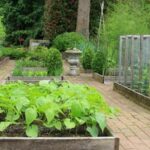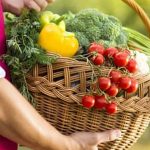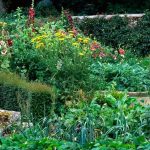Are you interested in growing your own vegetables but lack outdoor space? Indoor vegetable gardening facilities offer a solution for those with limited access to traditional gardening options. These facilities provide an opportunity to grow fresh and nutritious produce right in the comfort of your own home. With the right knowledge and resources, indoor vegetable gardening can be a rewarding and fulfilling experience.
Indoor vegetable gardening facilities allow individuals to cultivate their favorite vegetables without the need for a traditional outdoor garden. Whether you live in an apartment, have a small yard, or simply want to supplement your existing outdoor garden, these facilities can be an excellent option for providing a sustainable source of fresh produce year-round.
In this article, we will explore the essential aspects of indoor vegetable gardening, from choosing the right location and necessary equipment to selecting suitable plants and addressing common challenges that arise in indoor environments. By understanding the benefits and techniques associated with indoor vegetable gardening, you can create a thriving and productive garden within the walls of your home.
Choosing the Right Location
When it comes to indoor vegetable gardening facilities, finding the right location in your home is crucial for the success of your garden. There are several factors to consider when choosing the perfect spot for your indoor garden, including lighting, space, and accessibility.
Consider Natural Light
One of the most important considerations when choosing a location for your indoor garden is the availability of natural light. Most vegetables require at least 6-8 hours of sunlight each day to thrive. Look for a spot near a south-facing window where plants can receive ample sunlight throughout the day. If natural light is limited in your home, you may need to invest in grow lights to supplement the light requirements for your indoor garden.
Temperature and Humidity
In addition to light, it’s important to consider the temperature and humidity levels in the chosen location. Most vegetables prefer temperatures between 65-75 degrees Fahrenheit and moderate humidity levels. Avoid areas that are drafty or prone to extreme temperature fluctuations, as this can negatively impact the growth of your plants.
Accessibility
Another consideration when selecting a location for your indoor vegetable garden is accessibility. Choose a spot that is easily accessible for watering, pruning, and harvesting your plants. Consider placing your garden in an area with easy access to water sources and where messes can be easily cleaned up.
By carefully considering these factors, you can find the perfect spot in your home for your indoor vegetable gardening facilities, setting yourself up for success in growing healthy and thriving plants.
Essential Equipment and Supplies
When it comes to indoor vegetable gardening facilities, having the right equipment and supplies is essential for a successful harvest. One of the most important items to have is a proper lighting system. Since indoor environments may not receive as much natural light as outdoor gardens, investing in grow lights is crucial. LED or fluorescent grow lights are popular choices, as they provide the necessary spectrum of light for plant growth.
In addition to lighting, a controlled environment is important for indoor vegetable gardening. This includes maintaining proper humidity levels and airflow. A small fan can help with air circulation, while a humidifier or mister can assist in keeping the environment at the right moisture level.
Another key component for indoor gardening is containers or pots for your plants. These should have drainage holes to prevent waterlogging and allow excess water to escape. Additionally, quality potting soil designed for container gardening is necessary to provide the nutrients that plants need to thrive indoors.
Furthermore, don’t forget about basic gardening tools such as trowels, pruners, and watering cans. These are essential for planting, maintaining, and harvesting your indoor vegetable garden.
| Essential Equipment | Supplies |
|---|---|
| Grow lights (LED or fluorescent) | Potting soil |
| Fans/humidifiers/misters | Gardening tools (trowels, pruners, watering cans) |
Selecting the Perfect Vegetables
When it comes to selecting the perfect vegetables for your indoor garden, it’s important to consider the specific needs and requirements of each plant. Some vegetables thrive in indoor environments, while others may struggle to adapt. One important factor to consider is lighting.
Vegetables that require full sun may not be suitable for indoor gardening unless you have access to high-quality grow lights. Leafy greens like lettuce, spinach, and kale are excellent choices for indoor vegetable gardening as they can thrive with less sunlight compared to other plants.
Another consideration when selecting vegetables for indoor gardening is their size. Smaller plants like cherry tomatoes, peppers, and herbs are well-suited for limited space and containers commonly used in indoor gardens. Root vegetables like carrots and radishes can also be grown indoors, but they require deeper containers to accommodate their root systems.
Additionally, it’s essential to choose vegetables that are well-suited for the climate and conditions of your indoor vegetable gardening facilities. For example, if you struggle with maintaining consistent humidity levels, opting for plants that are more tolerant of fluctuating moisture levels would be advisable.
In summary, choosing the right vegetables for your indoor garden involves considering factors such as lighting requirements, space limitations, and environmental conditions. By carefully selecting the plants that are best suited for indoor environments, you can set yourself up for a successful and bountiful indoor vegetable garden.
| Vegetable | Suitability |
|---|---|
| Lettuce | Excellent choice due to its low light requirements |
| Cherry Tomatoes | Well-suited for small spaces but require proper support structures |
| Carrots | Possible to grow indoors but need deeper containers due to their root systems |
Maintenance and Care
Maintaining a healthy and thriving indoor vegetable garden requires attention to several key factors. From watering and fertilizing to pest control, there are several considerations to keep in mind to ensure the success of your indoor garden.
Watering and Fertilizing
Proper watering is essential for the health of your indoor vegetable plants. Overwatering can lead to root rot, while underwatering can cause wilting and stunted growth. It’s important to monitor the moisture level of the soil and adjust your watering schedule accordingly. Additionally, providing the right balance of nutrients through fertilization is crucial for plant growth. Consider using organic fertilizers or compost to provide essential nutrients without the risk of chemical build-up.
Pest Control
Pests can pose a significant threat to indoor vegetable gardening facilities. Common pests such as aphids, spider mites, and whiteflies can quickly infest indoor plants if not properly controlled. Regularly inspect your plants for signs of pest infestations and consider natural pest control methods such as introducing beneficial insects or using neem oil.
Light and Temperature Control
Proper light exposure and temperature regulation are key components of maintaining a healthy indoor vegetable garden. Ensure that your plants receive adequate light by placing them near windows or using grow lights as needed. Additionally, consider the temperature preferences of each plant species and make adjustments to create optimal growing conditions.
By paying close attention to these maintenance and care tips, you can ensure that your indoor vegetable garden remains healthy and productive. With proper watering, pest control, and environmental management, you can enjoy bountiful harvests of home-grown vegetables throughout the year.
Dealing With Common Challenges
Pests can be a common problem in indoor vegetable gardening facilities, but there are ways to address this issue. One effective method is to introduce natural predators such as ladybugs or praying mantises into your indoor garden to keep pests at bay. Additionally, regularly inspecting your plants for any signs of pest infestation and promptly addressing the issue can help prevent the problem from escalating.
Proper lighting is another key factor in successful indoor vegetable gardening. Inadequate light can lead to stunted growth and poor yields. To address this challenge, consider using grow lights to provide the necessary light spectrum for optimal plant growth. There are various types of grow lights available, including fluorescent, LED, and high-intensity discharge lights, each with its own benefits for indoor vegetable gardening.
Humidity control is also important for maintaining a healthy indoor garden. Proper air circulation and ventilation can help prevent issues such as mold and mildew growth. Using a dehumidifier or humidifier as needed to maintain appropriate humidity levels for your specific plants can also be beneficial.
Maximizing Space
When it comes to indoor vegetable gardening facilities, space may be a concern for many individuals. Fortunately, there are several strategies that can help maximize the use of limited space and allow you to grow a bountiful indoor garden. Here are some tips for making the most out of your indoor gardening space:
- Vertical gardening: Utilize vertical space by installing shelves or hanging planters to create a multi-level garden. This allows you to grow more plants without taking up additional floor space.
- Utilize containers: Choose compact varieties of vegetables and use containers of varying sizes to make the most out of your available space. Containers can be placed on windowsills, countertops, or any available flat surface.
- Use grow lights: If natural light is limited in your chosen location, consider using grow lights to provide the necessary light for your plants. This allows you to place your garden in areas that may not receive adequate sunlight.
In addition to these strategies, it’s important to regularly assess and reorganize your indoor vegetable gardening facilities as your plants grow and develop. By utilizing these tips, you can make the most out of limited indoor gardening space and enjoy a thriving indoor garden filled with delicious vegetables.
Harvesting and Enjoying Your Indoor Garden
In conclusion, indoor vegetable gardening facilities offer a convenient and rewarding way to grow your own fresh produce right in the comfort of your home. By choosing the right location, essential equipment and supplies, as well as the perfect vegetables for indoor environments, you can create a thriving indoor garden. Additionally, by following maintenance and care tips, addressing common challenges, and maximizing space, you can ensure the success of your indoor vegetable garden.
One of the most satisfying aspects of indoor vegetable gardening is being able to harvest your home-grown vegetables and enjoy them in delicious recipes. From fresh salads to savory stir-fries, having access to your own supply of produce adds an extra layer of flavor and satisfaction to your meals.
By incorporating your home-grown vegetables into a variety of dishes, you not only enjoy the fruits of your labor but also savor the wholesome taste of freshly picked ingredients.
Incorporating indoor vegetable gardening into your lifestyle not only provides a sustainable source of fresh produce but also promotes a healthy relationship with food. Whether you are an experienced gardener or just starting out, creating an indoor garden allows you to take ownership of where your food comes from. With dedication and proper care, you can enjoy the benefits of having an abundance of fresh vegetables at your fingertips all year round through indoor vegetable gardening facilities.
Frequently Asked Questions
Is an Indoor Vegetable Garden Worth It?
An indoor vegetable garden can be worth it for those who want to have fresh produce year-round, especially in areas with harsh winters or limited outdoor space. It provides the convenience of having fresh vegetables readily available at home.
What Is the Best Indoor Garden System?
The best indoor garden system will depend on individual needs and preferences. Some popular options include hydroponic systems, self-watering planters, and vertical gardens. Factors to consider include space, budget, and the types of plants you want to grow.
What Vegetables Can You Grow Completely Indoors?
There are several vegetables that can be grown completely indoors, including salad greens like lettuce and arugula, herbs like basil and parsley, root vegetables like carrots and radishes (with sufficient depth), and compact varieties of tomatoes and peppers. With proper care and the right conditions, these vegetables can thrive indoors without needing outdoor sunlight.

If you’re looking to get into vegetable gardening, or are just looking for some tips on how to make your current garden better, then you’ve come to the right place! My name is Ethel and I have been gardening for years. In this blog, I’m going to share with you some of my best tips on how to create a successful vegetable garden.





